Theseus
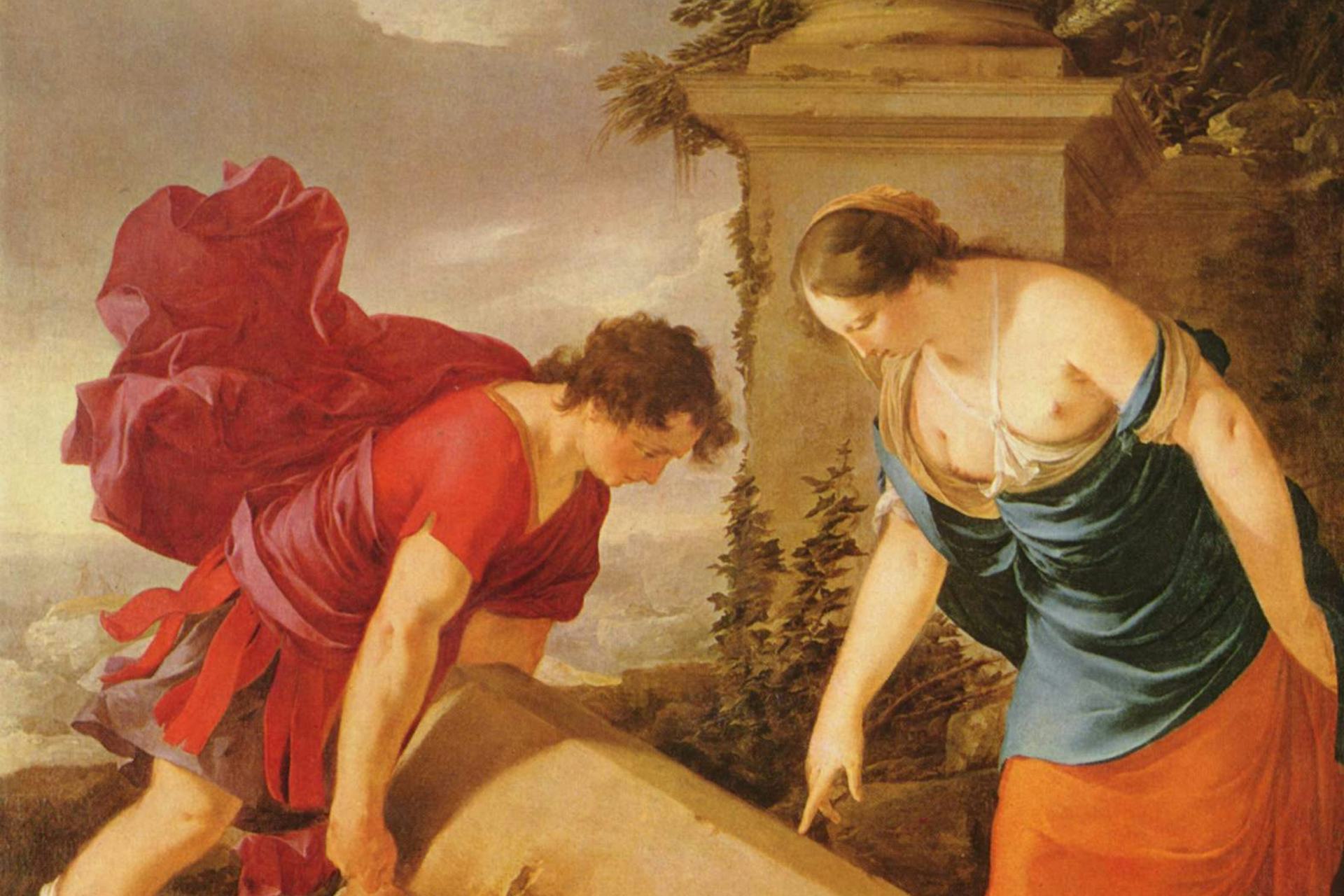
Theseus and Aethra by Laurent de La Hyre (ca. 1635–1636)
Museum of Fine Arts, BudapestPublic DomainOverview
Theseus—son of Aegeus (or Poseidon) and Aethra—was by far the most important of the mythical heroes and kings of Athens. His heroic accomplishments included killing the Minotaur, though he was also remembered as a political innovator who transformed his city into a major regional power.
Theseus was raised by his mother in Troezen but moved to Athens upon reaching adulthood. He traveled widely and performed many heroic exploits, eventually sailing to Crete to kill the Minotaur.
As king of Athens, Theseus greatly improved the government and expanded the power of his city. He was sometimes seen as the mythical predecessor of the political unification of Attica.
Who were Theseus’ parents?
Theseus was the product of an affair between Aegeus, the king of Athens, and Aethra, a princess of Troezen. But in some traditions, the sea god Poseidon slept with Aethra the same night as Aegeus, making Theseus his son instead.
Theseus was raised by his mother Aethra in Troezen. The identity of his father was kept secret until Theseus had proven himself worthy of his inheritance.
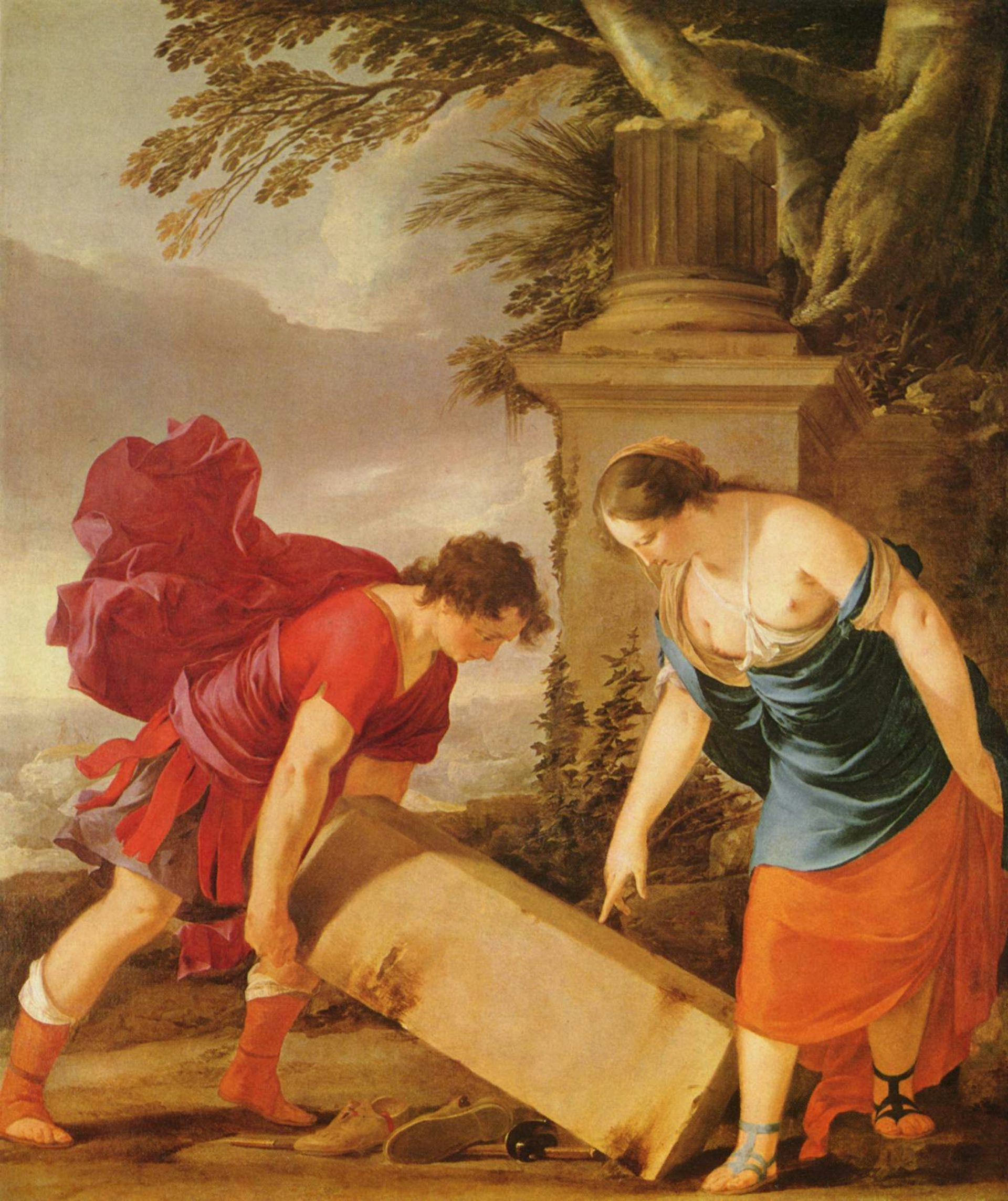
Theseus and Aethra by Laurent de La Hyre (ca. 1635–1636)
Museum of Fine Arts, BudapestPublic DomainWhom did Theseus marry?
Theseus had a weakness for women and was not always loyal to them. He eventually married Phaedra, a princess from Crete. Their marriage ended disastrously, however, when Phaedra fell passionately in love with Hippolytus, Theseus’ son by another consort.
Aside from Phaedra, Theseus had many lovers throughout his storied career. These included Phaedra’s own sister Ariadne; an Amazon queen named either Antiope or Hippolyta; and even the famous Helen, according to some traditions.
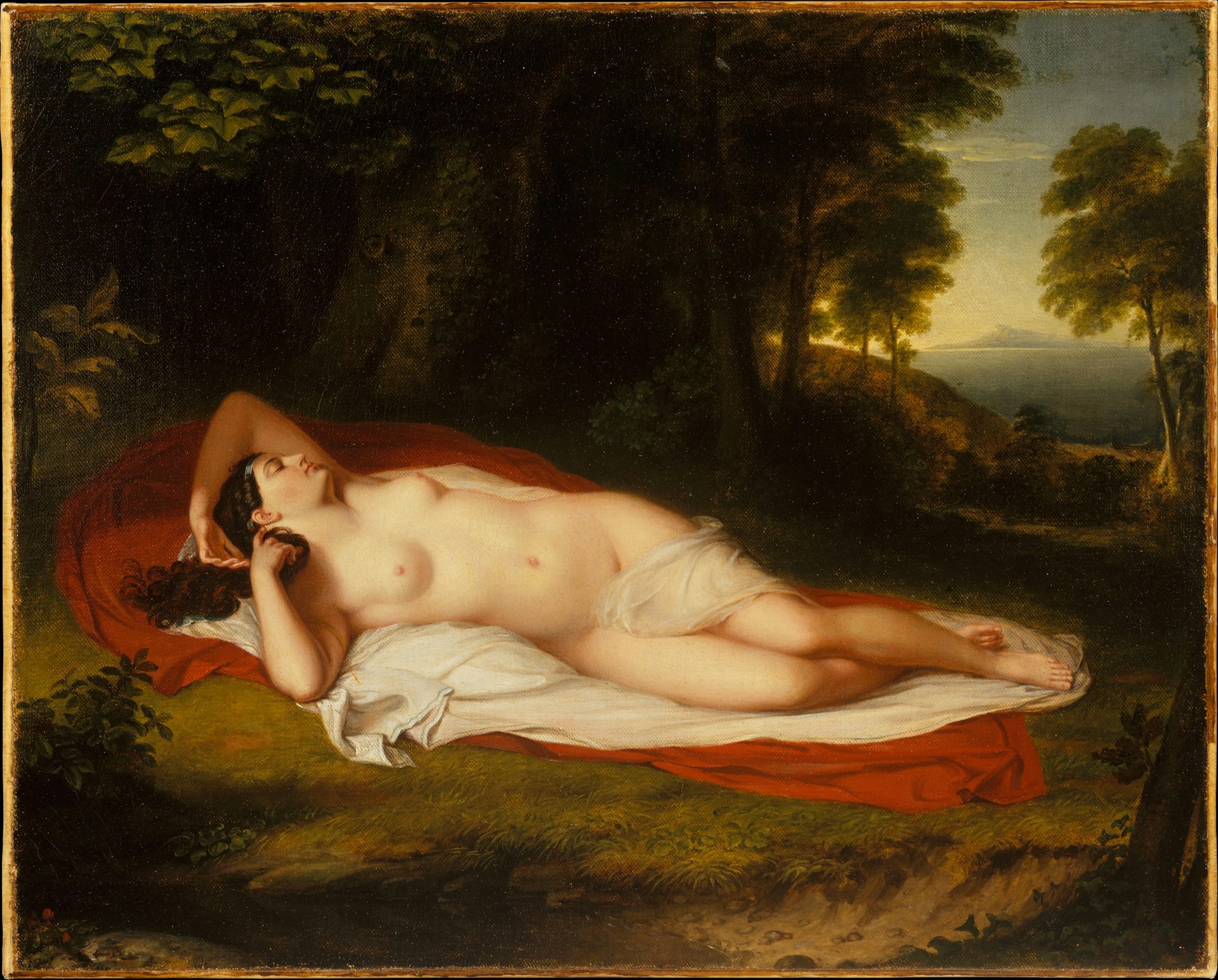
Ariadne by Asher Brown Durand, after John Vanderlyn (ca. 1831–1835)
The Metropolitan Museum of ArtPublic DomainHow did Theseus die?
Like many Greek heroes, Theseus did not die happily. In the common tradition, he was exiled from Athens after his recklessness turned the city and its nobility against him. He traveled to the small island of Scyros, where he fell to his death from a cliff (or was thrown from the cliff by the local king).
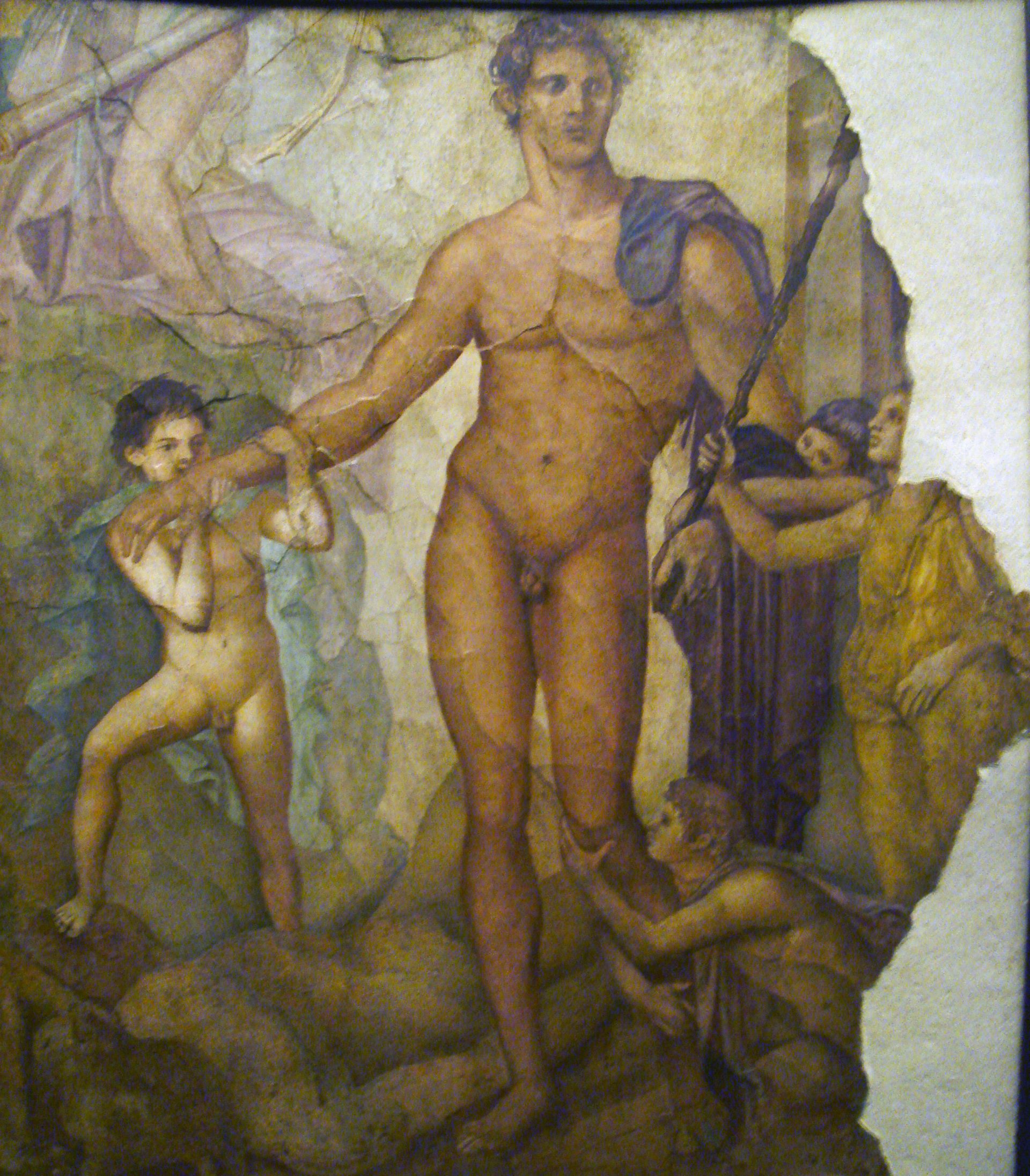
Roman fresco of Theseus from Herculaneum (ca. 45–79 CE)
Stefano BologniniCopyrightTheseus Slays the Minotaur
Shortly after meeting his father Aegeus in Athens, Theseus voyaged to the island of Crete as one of the fourteen “tributes” sent annually as a sacrifice to the Minotaur—a half-man, half-bull hybrid imprisoned in the Labyrinth. Theseus vowed to kill the Minotaur and end the bloody custom once and for all.
In Crete, Theseus’ good looks won him the love of Ariadne, the daughter of the king. Ariadne helped Theseus on his mission by giving him a ball of thread that he unraveled as he made his way through the maze-like Labyrinth. After finding and killing the Minotaur, Theseus re-wound the thread to safely escape.
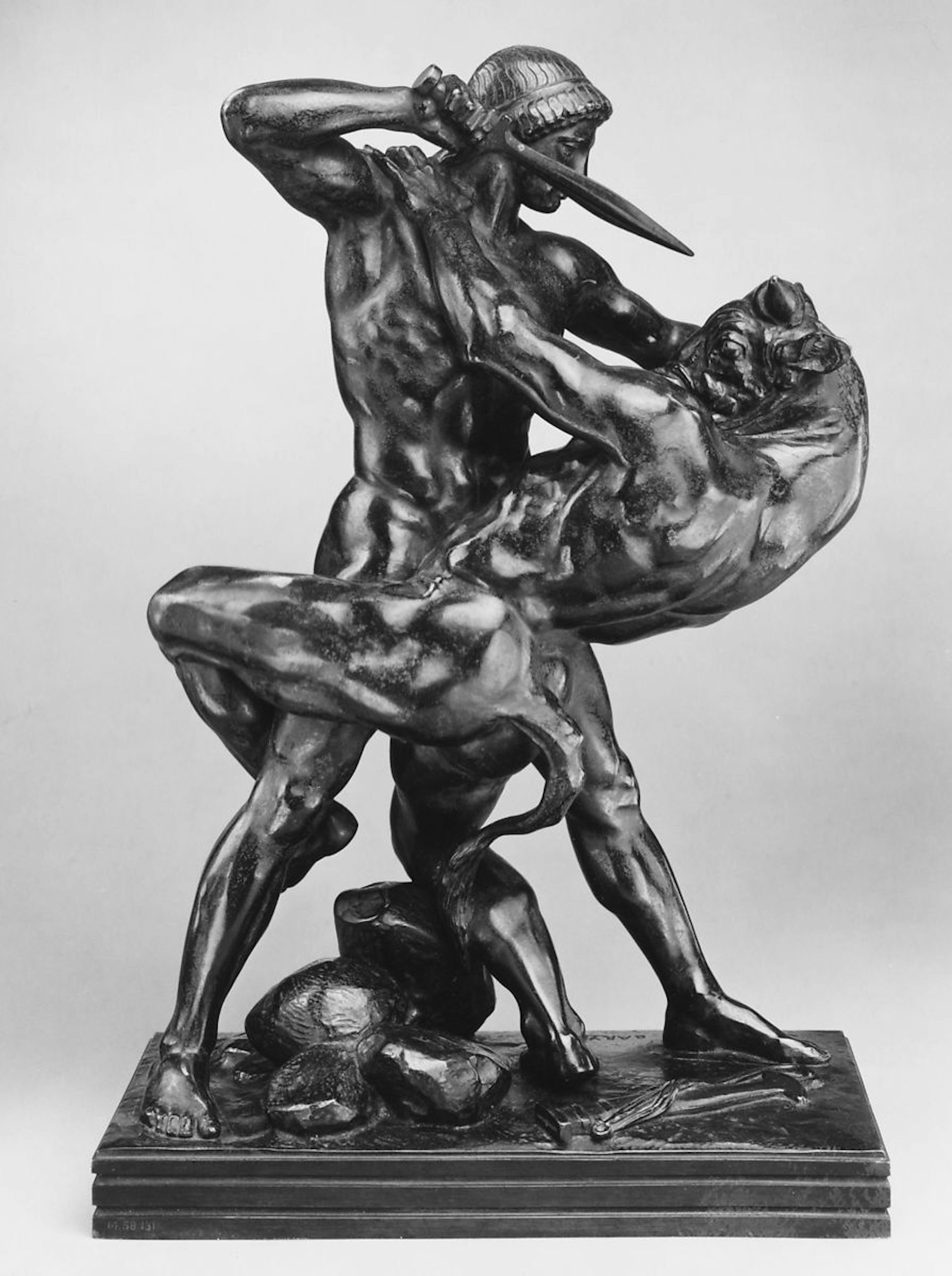
Theseus Slaying the Minotaur by Antoine-Louis Barye (1843)
The Metropolitan Museum of ArtPublic DomainEtymology
The name Theseus was likely derived from the Greek word θεσμός (thesmos), which means “institution.” Theseus’ name thus reflects his mythical role as a founder or reformer of the Athenian government.
Pronunciation
English
Greek
Theseus Θησεύς Phonetic
IPA
[THEE-see-uhs] /ˈθiːsiəs/
Attributes
In his iconography, Theseus is usually depicted as a handsome, strong, and beardless young hero. Theseus’ battle with the half-bull Minotaur was an especially popular theme in Greek art.
Family
Theseus’ father was either Poseidon, the god of the sea, or Aegeus, the king of Athens. His mother was Aethra, the daughter of King Pittheus of Troezen.
Family Tree
Mythology
Birth
Theseus was the son of Aethra, the daughter of King Pittheus of Troezen, and either Aegeus or Poseidon. Aegeus, who was the king of Athens, had no children and therefore no heir to his throne. Hoping to remedy this, Aegeus went to Delphi, where he received a strange prophecy:
The bulging mouth of the wineskin, O best of men, loose not until thou hast reached the height of Athens.[1]
On his way back to Athens, Aegeus stopped at Troezen, where he was entertained by King Pittheus. Aegeus revealed the prophecy to Pittheus, who understood its meaning and plied Aegeus with wine. Aegeus then slept with Pittheus’ daughter Aethra.
Before leaving Troezen, Aegeus hid a sword and sandals under a large stone. He told Aethra that if she had a son, she should wait until he had grown up and bring him to the stone. If he managed to lift it and retrieve the tokens, he should be sent to Athens.
According to other versions, Aethra had also been seduced by the god Poseidon, and it was he who was Theseus’ father.[2] In any case, Theseus grew up to be a strong and intelligent young man. When he had come of age, his mother took him to the stone where Aegeus had long ago deposited his sword and sandals. Theseus successfully retrieved these tokens and left for Athens to find his father.
Journey to Athens
Instead of travelling to Athens by sea, Theseus decided to make a name for himself by taking the more dangerous overland route through the Greek Isthmus. At the time, it was plagued by bandits and monsters. On his way to Athens, Theseus cleared the Isthmus in what are sometimes called the “Six Labors of Theseus”:
At Epidaurus, Theseus met Periphetes, famous for slaughtering travellers with a giant club. Theseus killed Periphetes and claimed the club for himself.
Theseus then met Sinis, who would bend two pine trees to the ground, tie a traveller between the bent trees, and then let the trees go, thus tearing apart the traveller’s limbs. Theseus killed Sinis using this same method. He then seduced Sinis’ daughter Perigone, who later gave birth to a son named Melanippus.
Theseus next killed the monstrous Crommyonian Sow (sometimes called Phaea),[3] an enormous pig that terrorized travellers.
Near Megara, Theseus met the robber Sciron, who would throw his victims off a cliff. Theseus, as usual, used his opponent’s method against him and threw Sciron off a cliff.
At Eleusis, Theseus fought Cerycon, who challenged travellers to a wrestling match and killed whomever he defeated. Following this model, Theseus wrestled Cerycon, beat him, and killed him.
Finally, Theseus defeated Procrustes (sometimes called Damastes), who had two beds that he would offer to travellers. If the traveller was too tall to fit in the bed, Procrustes would cut off their limbs; if they were too short, he would stretch them until they fit. Theseus killed Procrustes by putting him on one of his beds, cutting off his legs, and then decapitating him.
Arrival at Athens
After clearing the Isthmus, Theseus finally arrived at Athens. He did not, however, reveal himself to his father Aegeus immediately. Aegeus became suspicious of the stranger and consulted Medea, whom he had married after sleeping with Aethra.
Medea realized that Theseus was the son of Aegeus, but she did not want Aegeus to recognize him. She was afraid he would choose Theseus as his heir over her own son. Medea therefore tried to trick her husband into killing Theseus.
In some stories, Medea convinced Aegeus to send Theseus to slay the monstrous Bull of Marathon, hoping that the bull would kill him first.
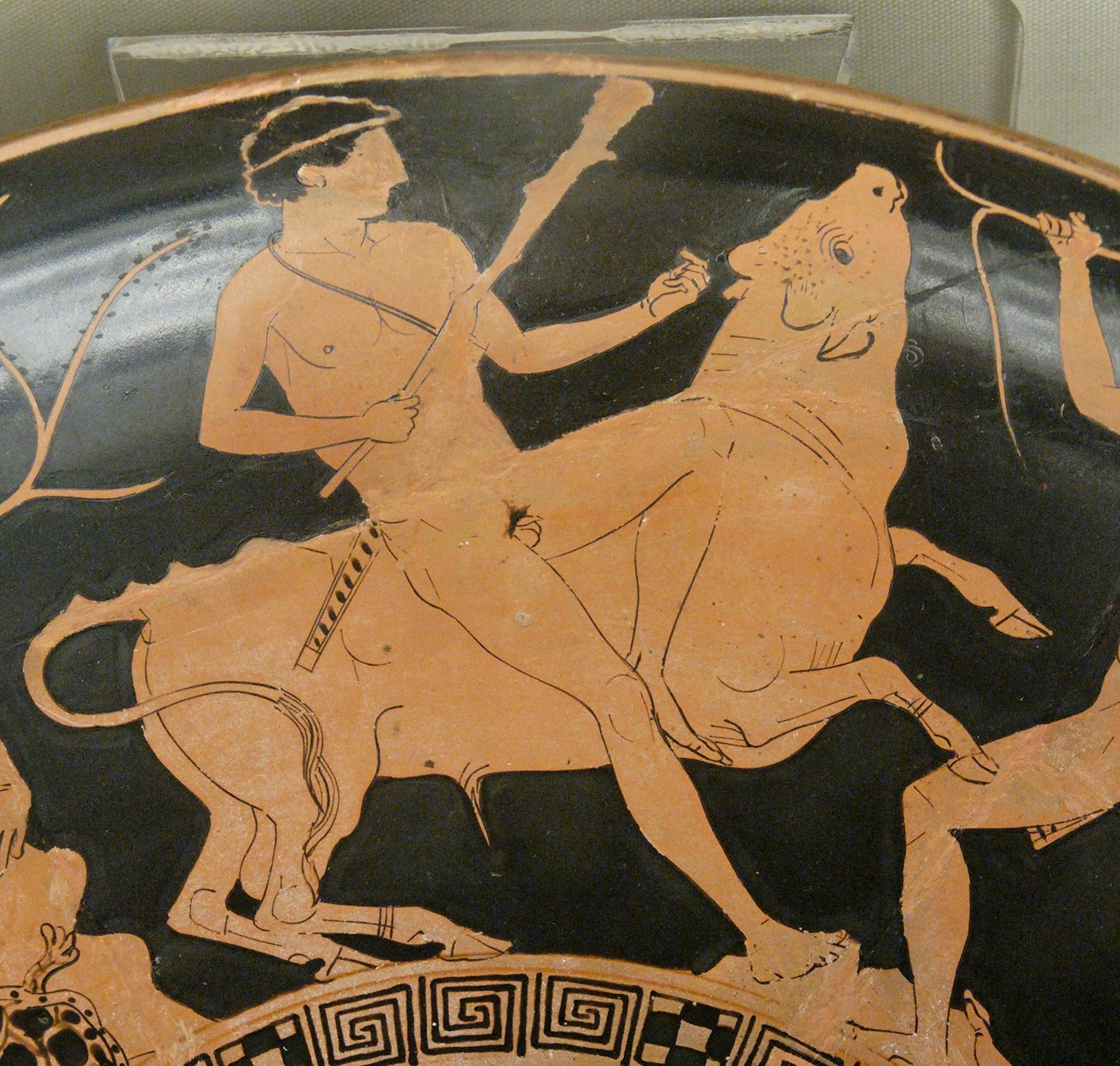
Painting in tondo of kylix showing Theseus fighting the Bull of Marathon by unknown artist (c. 440–430 BC).
Marie-Lan NguyenCC BY-SA 2.5In other stories, Medea tried to poison Theseus. But Aegeus recognized Theseus by the sword he was carrying (the sword he had left with Aethra at Troezen) and stopped him from drinking the poison. Medea fled into exile.
Medea was not the only threat to Theseus’ standing in Athens. The sons of Aegeus’ brother Pallas (often called the Pallantides) had hoped to inherit the throne if their uncle Aegeus died childless. According to some sources, the sons of Pallas ambushed or rebelled against Theseus and Aegeus. This attempt failed, however, and after Theseus killed the sons of Pallas he was secured as the heir to the throne of Athens.[4]
The Minotaur
During Aegeus’ reign, the Athenians were forced to send a regular tribute of fourteen youths (seven boys and seven girls) to Minos, the king of the island of Crete. This was reparation for the murder of Minos’ son Androgeus in Athens several years before.
When the fourteen tributes reached Crete, they were fed to the Minotaur, a terrible bull-man hybrid born from an affair between a divine bull and Minos’ wife Pasiphae:
A mingled form and hybrid birth of monstrous shape, ...
Two different natures, man and bull, were joined in him.[5]
The Minotaur was imprisoned in the Labyrinth, a giant maze built by the Athenian architect Daedalus. None of the tributes who were sent into the Labyrinth ever made it out.
Soon after his arrival in Athens, Theseus sailed off as one of the fourteen tributes dedicated to the Minotaur. According to some traditions, Theseus actually volunteered to go to Crete, vowing that he would kill the Minotaur and bring an end to the terrible tribute once and for all.[6]
The ship on which he and the other tributes embarked had a black sail; before the ship left for Crete, Aegeus made Theseus swear that if he managed to return alive he would have the black sail changed to a white one.
At Crete, Minos’ daughter Ariadne fell in love with Theseus and agreed to help him kill the Minotaur if he would take her with him to Athens. Before Theseus entered the Labyrinth, Ariadne gave him a ball of thread. Theseus unravelled the thread as he moved through the Labyrinth, killed the Minotaur, and found his way out of the Labyrinth by following the thread back to the exit. Theseus and Ariadne then escaped from Crete with the other tributes.
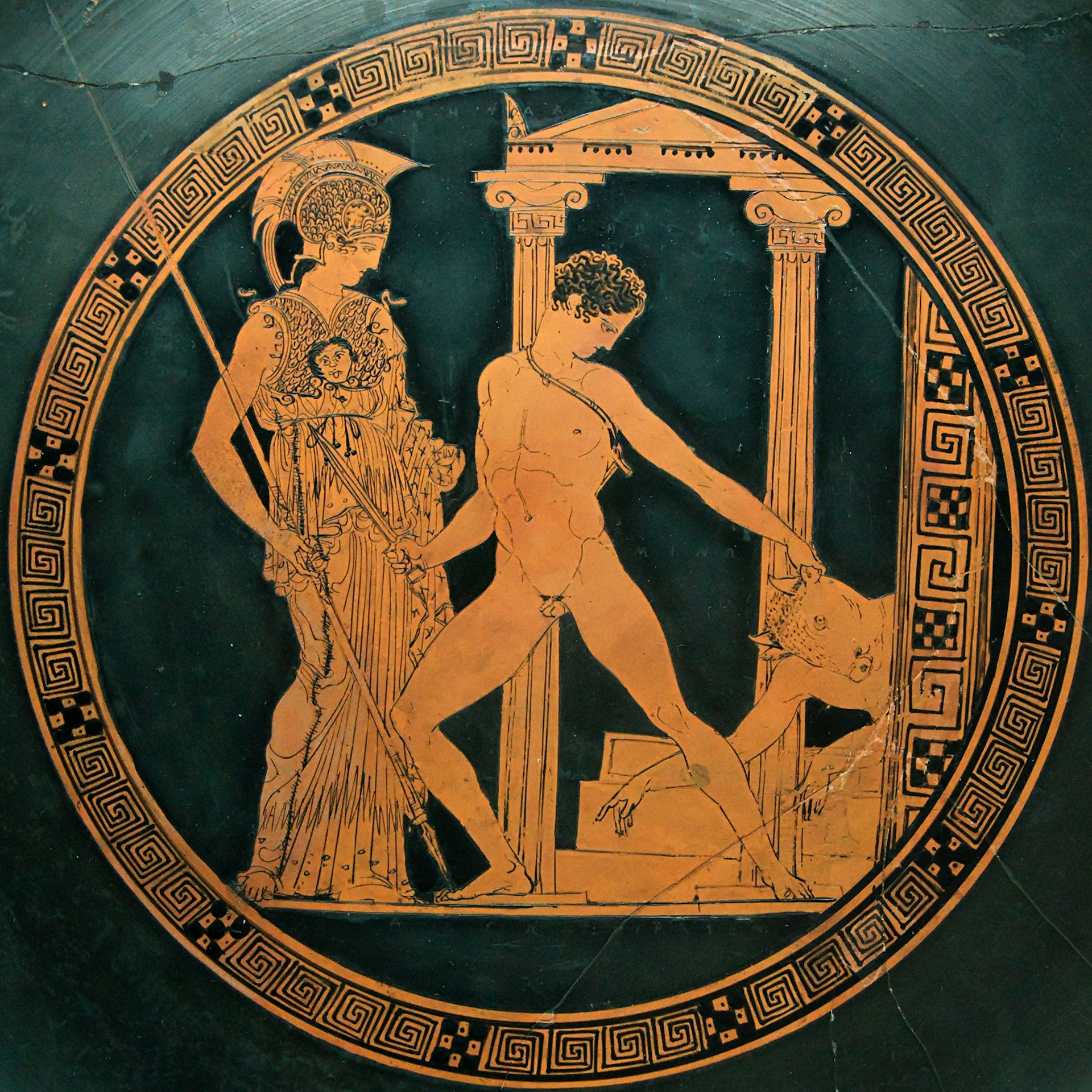
Detail of the Aison cup showing Theseus slaying the Minotaur in the presence of Athena (c. 435–415 BC).
Marie-Lan NguyenCC BY 2.5On their journey back to Athens, Theseus stopped at the island of Naxos. There are different versions of what happened to Ariadne there. According to some, Theseus simply abandoned her. Another well-known story, however, claims that Dionysus fell in love with Ariadne while she was on Crete and carried her off for himself. In any case, Theseus arrived at Athens without Ariadne.[7]
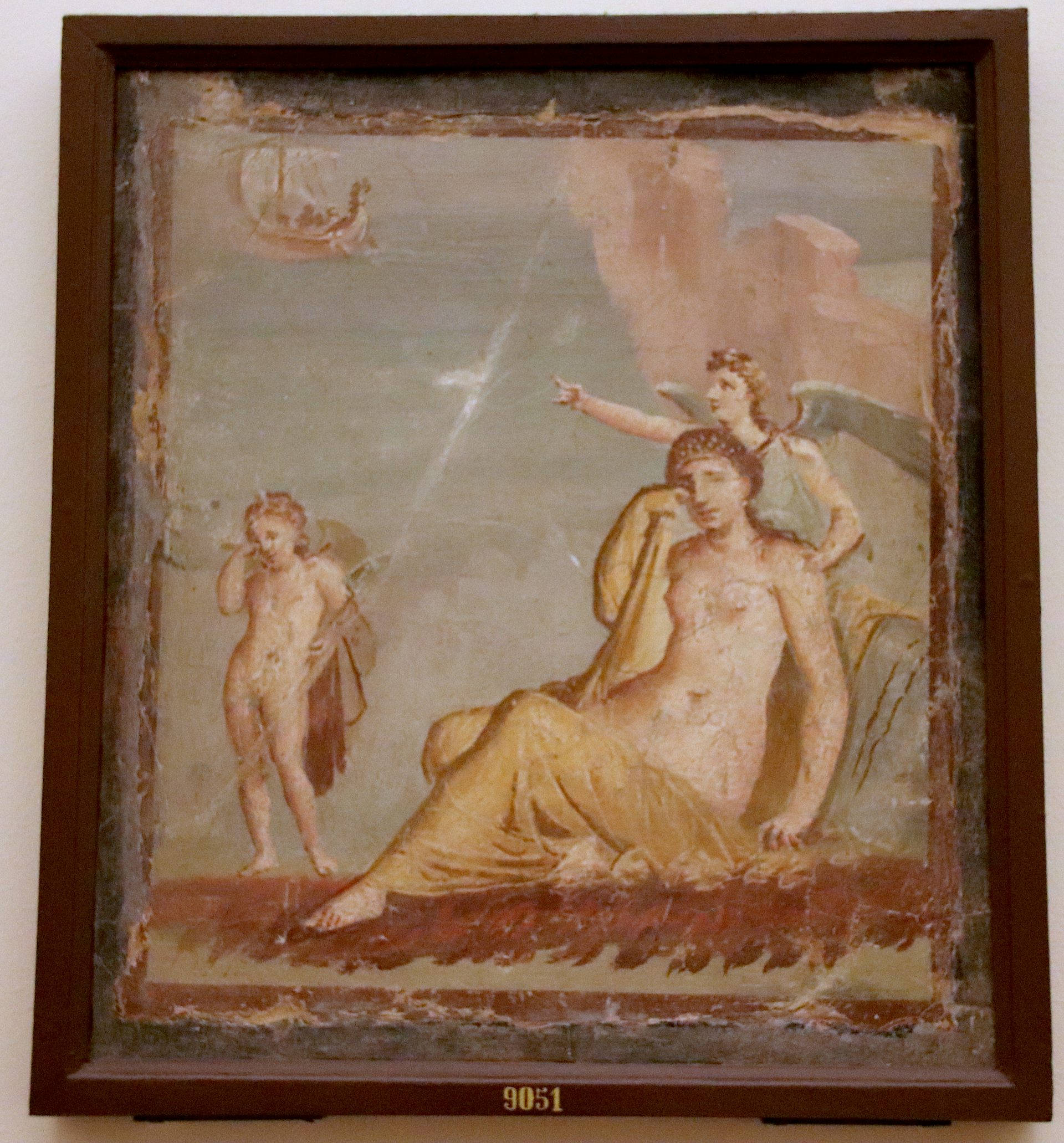
Ariadne weeps as Theseus' ship leaves her on the island of Naxos. Roman fresco from Pompeii at Naples Archaeological Museum.
Gary ToddPublic DomainWhether distracted by the loss of Ariadne or for some other reason, Theseus forgot to raise the white flag as he came back to Athens. Aegeus, who was watching from a tower, saw the black flag and thought that his son had died.
Overcome by grief, Aegeus killed himself by leaping into the sea (this is the origin, according to the Greeks, of the name of the “Aegean Sea”). Theseus arrived to find his father dead and so became king of Athens.
The Amazons
Like many heroes of Greek mythology, Theseus waged war with the Amazons. The Amazons were a fierce race of warrior women who lived near the Black Sea or the Caucasus. Their queens were said to be the daughters of the war god Ares.
While among the Amazons, Theseus fell in love with their queen, Antiope (sometimes called Hippolyta),[8] and carried her off with him to Athens. The Amazons then attacked Athens in an attempt to get Antiope back. In some versions of the myth, the Amazons laid waste to the countryside of Attica and only left after Antiope was accidentally killed in battle.[9]
In other versions, Theseus tried to abandon Antiope so that he could marry Phaedra, a princess from Crete; when the jilted Antiope tried to stop the wedding, Theseus killed her himself.[10] In all versions of the story, however, Theseus finally managed to drive the Amazons away from Athens after the death of Antiope, though only after Antiope had given him a son named Hippolytus.
Hippolytus
After the death of Antiope, Theseus married Phaedra, the daughter of the Cretan king Minos and thus the sister of his former lover Ariadne. Phaedra bore Theseus two children, Acamas and Demophon.
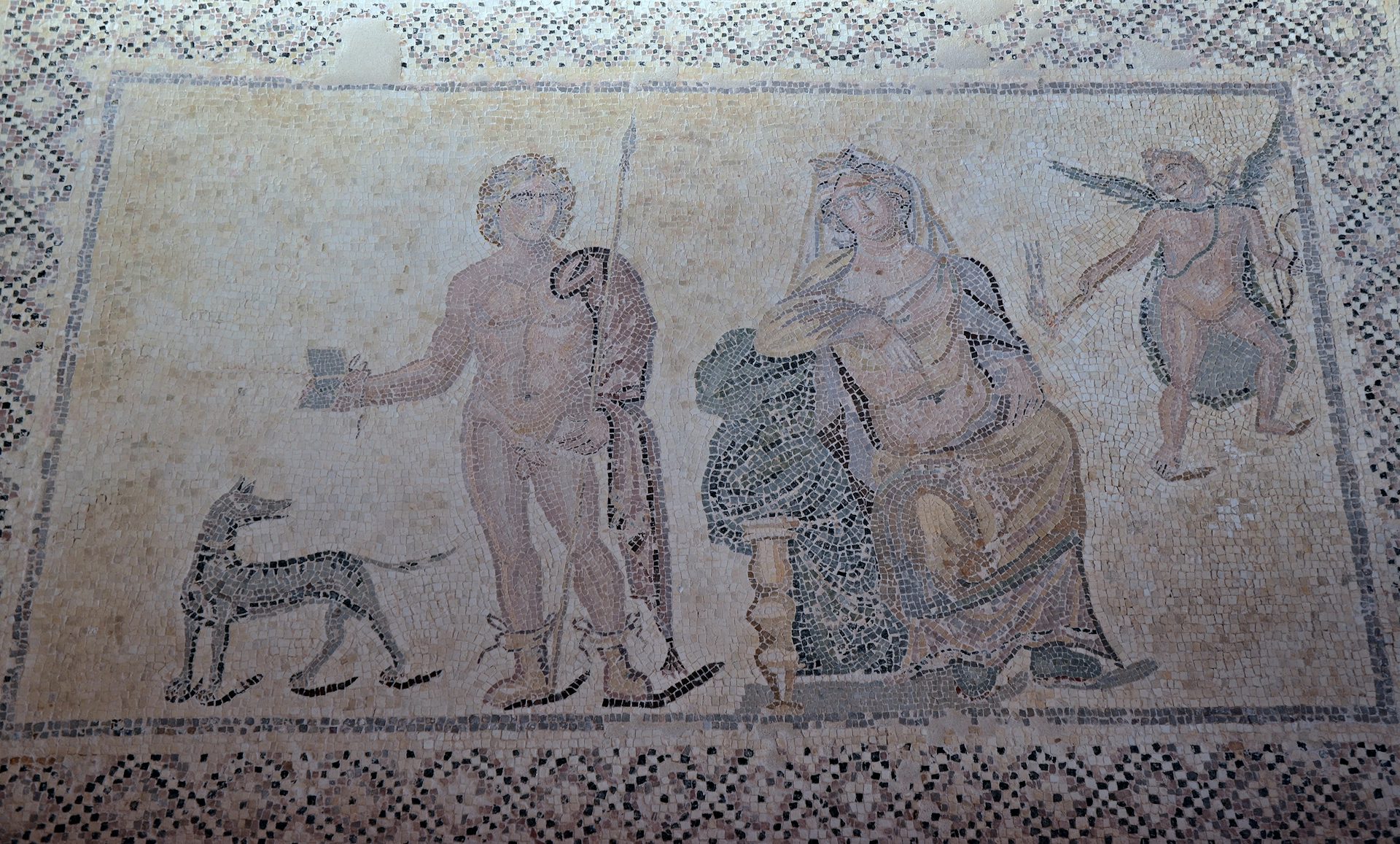
Roman mosaic of Phaedra and Hippolytus at House of Dionysus, Cyprus (ca. 3rd century CE).
Carole RaddatoCC BY-SA 2.0Eventually, however, Phaedra fell in love with Hippolytus, the son of Theseus’ first wife, Antiope. Phaedra tried to convince Hippolytus to sleep with her. When he refused, Phaedra tore her clothing and falsely claimed that Hippolytus had raped her. Theseus was furious and prayed to Poseidon that Hippolytus might be punished.
Poseidon, unfortunately, heard Theseus’ prayer and sent a bull from the sea to charge Hippolytus as he was riding his chariot near the coast. Hippolytus’ horses were frightened; he lost control of the chariot, became entangled in the reins, and was trampled to death.
Theseus discovered his son’s innocence too late; Phaedra, ashamed and guilty, hanged herself.[11]
Abduction of Helen and Persephone
Theseus took part in several other adventures. Some sources include him among the Argonauts who sailed with Jason to retrieve the Golden Fleece, or with the heroes who took part in the Calydonian Boar Hunt.
In many of these adventures, Theseus was accompanied by his best friend Pirithous, the king of the Lapiths of northern Greece. In one famous tradition, Theseus and Pirithous both vowed to marry daughters of Zeus. Theseus chose Helen, and Pirithous helped him abduct her from her father Tyndareus’ home in Sparta.
Pirithous then chose Persephone as his bride, even though she was already married to Hades. Theseus left Helen in the care of his mother, Aethra, while he and Pirithous went to the Underworld to abduct Persephone. Predictably, this did not end well. Theseus and Pirithous were caught trying to abduct Persephone and trapped in the Underworld.
While Theseus was away from Athens, Helen’s brothers, Castor and Polydeuces, retrieved her and took Aethra prisoner. Meanwhile, Theseus was eventually rescued from Hades by Heracles, but Pirithous remained trapped in eternal punishment for his impiety (in the most common version of the story).[12] When Theseus returned to Athens, he found that Helen was gone and that his mother had become her slave in Sparta.
Athenian Government and Death
Theseus was said to have been responsible for the synoikismos (“dwelling-together”), the political and cultural unification of the region of Attica under the rule of the city-state of Athens. In later times, some Athenians even traced the origins of democratic government to Theseus’ rule, even though Theseus was a king. Theseus was always seen as an important founding figure of Athenian history.
As an old man, Theseus fell out of favor in Athens. Driven into exile, he came to Scyrus, a small island in the Aegean Sea. It was in Scyrus that Theseus died. In some stories, he was thrown from a cliff by Lycomedes, the king of Scyrus. In 475 BCE, the Athenians claimed to have identified the remains of Theseus on Scyrus and brought them back to be reinterred in Athens.
Worship
Festivals and/or Holidays
The festival of Theseus, called the Theseia, was celebrated in Athens in the autumn. It was presided over by the Phytalidae, the hereditary priests of Theseus. The Phytalidae were said to have been the direct descendants of the fourteen tributes Theseus saved when he killed the Minotaur.[13] Little else is known of the festivals or worship of Theseus.
Temples
The hero-cult of Theseus was almost certainly concentrated solely in the city of Athens. The main sanctuary of Theseus, the Theseion, may have existed as early as the sixth century BCE.[14] It was most likely located at the center of Athens, in the vicinity of the Agora. Though the Theseion was probably the main center of Theseus’ hero-worship, little else is known about it, and there is still virtually no archaeological evidence of it. There were likely other sanctuaries of Theseus in Athens by the fourth century BCE.
Pop Culture
Theseus has had a rich afterlife in modern popular culture. The 2011 film Immortals is loosely based on the myth of Theseus and the Minotaur; Theseus is portrayed by Henry Cavill. Theseus also features in the miniseries Helen of Troy (2003), in which he kidnaps Helen with his friend Pirithous.
The myths of Theseus are also retold in many modern books and novels. Mary Renault’s critically acclaimed The King Must Die (1958) is a historicized retelling of Theseus’ early life and his battle with the Minotaur; its sequel, The Bull from the Sea (1962), deals with Theseus’ later career. The myth of Theseus and Antiope is also reimagined in Steven Pressfield’s novel Last of the Amazons (2002).
Jorge Luis Borges’ short story The House of Asterion (published in Spanish in 1947) presents an interesting variation on the myth of the Minotaur, told from the perspective of the Minotaur rather than Theseus. The myth of Theseus inspired Suzanne Collins’ The Hunger Games trilogy (2008–2010).